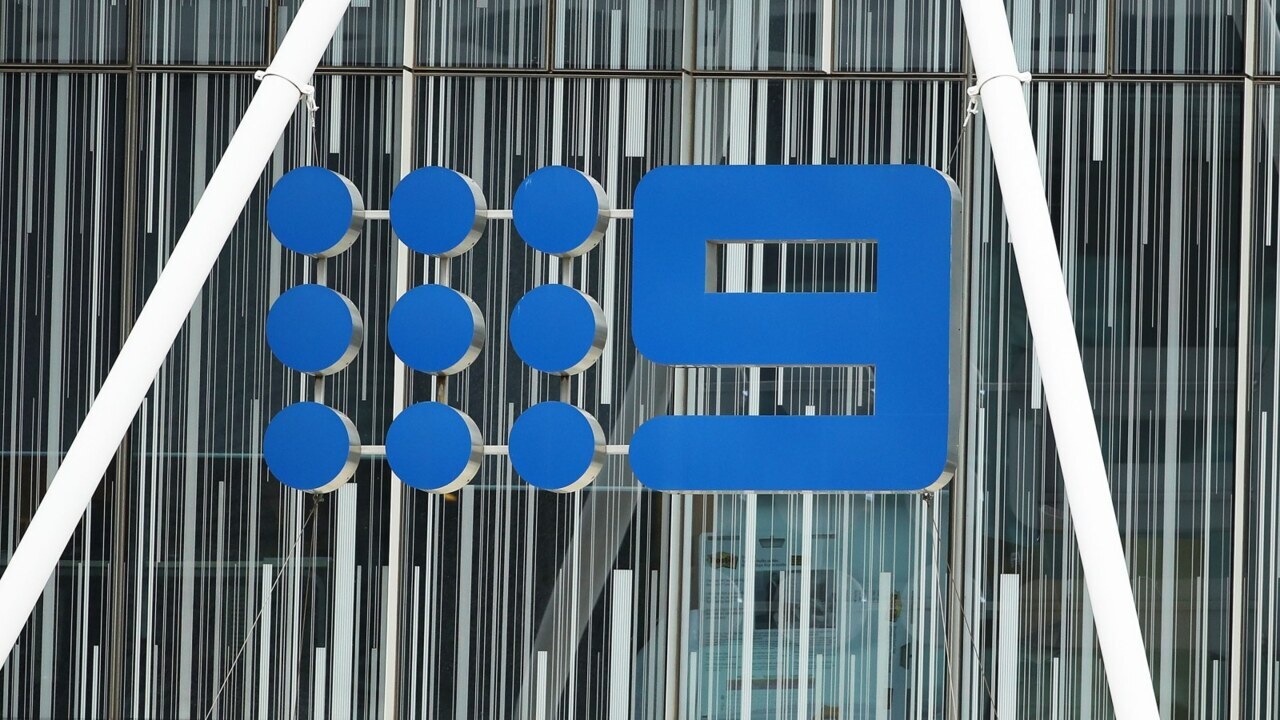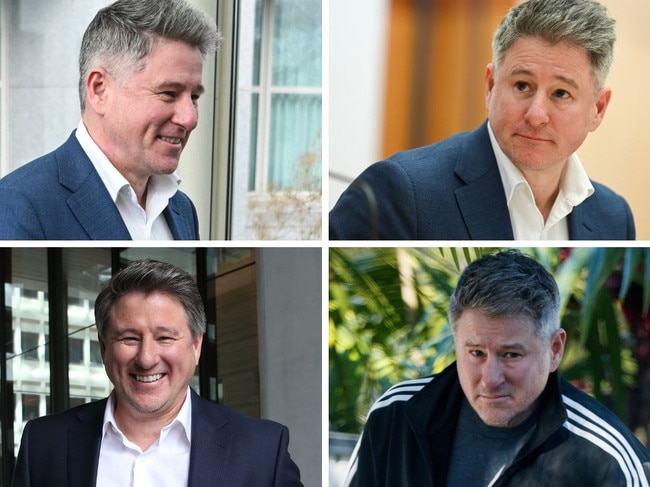Top institutional investor in Nine backs Mike Sneesby’s exit
Martin Currie chief investment officer Reece Birtles says that given the multiple challenges facing Mike Sneesby, his departure from Nine was not altogether a shock.

Nine Entertainment boss Mike Sneesby had to leave the media company because of cultural issues, revenue challenges and questions over its Domain listings business, according to one of its institutional shareholders, Martin Currie.
The Nine chief executive, in the top job since April 2021, announced his resignation early on Thursday, saying this year had been “challenging”.
Martin Currie chief investment officer Reece Birtles told The Australian that given the multiple challenges facing Mr Sneesby, his departure was not a shock.
“I think we can understand how this happened. There’s a lot of pressure and it’s from multiple directions.
“There’s questions over Domain, there’s questions over that revenue growth and there’s questions over the cultural issues and you have a new chair.
“So I think there needed to be a resolution on that and I think it’s a good thing for the path forward,” said Mr Birtles, who oversees $6bn in funds.
Mr Sneesby had a difficult task given the industry headwinds.
“I think we’ve been looking for an inflection in terms of growth,’’ he added. “Even if some of the more challenged assets are in decline you have the growing digital parts. In recent times there has been a structural downturn, which probably made that hard to prove.’’

While new chair Catherine West put a brave face on the results released in late August, saying “Nine continued to perform well in a challenging market’’, the reality was that the company underperformed on all key financial metrics. Revenue fell 3 per cent to $2.62bn, net profit was 38.9 per cent lower at $110.9m, and dividends were off 23 per cent.
The company forecast a strong start to the current year, driven by its Olympics coverage, despite a subdued underlying advertising market.
When Mr Sneesby took the reins at the start of April 2021, the company was riding high.
It had a market capitalisation north of $5bn, the worst of the pandemic’s impact on the share price had been recovered, and, as then-chairman Peter Costello said, the future was bright.
Fast-forward almost three and a half years, and the company is worth less than $2bn, the share buyback has been cancelled, dividends have been slashed every year, and the company has been mired in controversy for much of the year, resulting in the loss of both Mr Costello and its chief executive. Shareholders, including reclusive billionaire Bruce Gordon with about 15 per cent, would be rightly feeling aggrieved.
Nine has delivered a total shareholder return of minus 17.5 per cent over the past three years, and minus 35.6 per cent over the past 12 months.
Over the decade it’s in the black to the tune of just 0.8 per cent, substantially worse than simply holding cash.
This is not the vision the company was selling in March 2021 when Mr Sneesby’s elevation to the top job was announced.
Mr Costello, who stepped down earlier this year following a physical altercation with a journalist from The Australian, said the company was hitting its straps, following the 2018 merger with 177-year old newspaper publisher Fairfax.
This deal was made possible by the Turnbull government abolishing cross-media ownership laws that prohibited companies from owning both television stations and newspapers in the same market.
On the back of that deal, Mr Sneesby’s predecessor, Hugh Marks, had grown the business from a value of just $1.3bn in 2015.
“Through the combined strength that came from the Nine-Fairfax merger, our current market capitalisation has grown to just over $5bn,’’ Mr Costello said while announcing Mr Sneesby’s appointment.
“This is a remarkable turnaround and Hugh has my sincere thanks and gratitude for his work.
“His time as CEO has seen Nine make a number of key strategic decisions, which not only redefined Nine but changed the wider media landscape in Australia.’’
Mr Sneesby’s pitch to investors at a Macquarie investor day in May that year was that Nine had the ability to leverage its multiple platforms for content and sales, and was “far ahead of traditional competitors driving incremental margins’’.
The company said at the time that more than half of Nine’s revenue came from growth segments, including subscriptions across streaming platform Stan and its news publishing assets, as well as real estate marketplace Domain.
By this financial year, the company was looking to cut $230m in costs – with $80m already delivered at the time – and drive about 30 per cent of revenue from video on demand and about 35 per cent from subscriptions.
Stan Sport numbers at the time were “slightly lower than expected’’ after the February launch, Mr Sneesby said, with Stan having 2.3 million active users at the time, and close to 150,000 of those subscribing to Stan Sport.
Three years hence – and with other competitors such as Paramount having launched into the increasingly crowded streaming market – Stan still has 2.3 million users, and delivered revenue of $468.5m last financial year, down 1 per cent.
The division’s EBITDA came in at $148.5m, down 2 per cent.
Television revenue fell 10 per cent to $1.13bn, for EBITDA of $208.3m, described as a “strong revenue share performance supported by audience growth’’.
Domain managed to grow revenue over the past financial year, up 13 per cent to $391.1m, however still remains a distant second behind market leader REA Group, which is majority-owned by News Corp Australia, which publishes The Australian.
Interestingly, in its market outlook, the company argued that “Nine’s confidence in its ability to grow its total television revenues through the cycle builds, marking a significant point of inflection for the business’’.
Three years ago, in August, the company said, “Television combined has reached a key inflection point, with Nine now expecting long-term, through the cycle revenue growth’’.
In November that year, Mr Sneesby’s address to the annual meeting said the publishing business had “reached a key inflection point with digital growth in this result outpacing the decline of print and of course, with a favourable cost base, where the profitability of each incremental subscriber dollar is markedly higher than print’’.
Nine did manage to grow revenue in FY22, adding more than $300m in turnover and about $120m in profit, but profitability has since been on the decline, while revenue has started to dip, and in FY24 was below the levels of two years previously.
JPMorgan, commenting on the recent full-year results, said for both Nine and much smaller competitor Seven West Media, “cash conversion was poor’’.
The broker says the upfront payments for the Olympic were a drag on last year’s results, which should reverse this year.
Nine shares closed 2.8 per cent lower at $1.21.
More Coverage
Originally published as Top institutional investor in Nine backs Mike Sneesby’s exit





